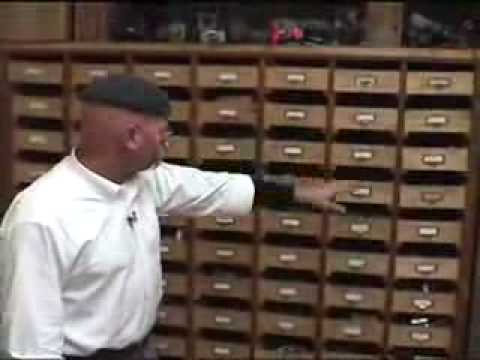Lost in Schlock is a blog by Tim Shrum, who creates props, monsters, and costumes for super low-budget films. The site has been around for awhile, and is chock full of tutorials and guides for all manner of objects. It is geared to the DIY crowd, so almost any prop shop can pull off the projects. I found some great tutorials on how to make Monster Mud, low budget fake heads, and molded gelatin prosthetics. I also found this old video with Leonard Nimoy about making spaceship models out of junk, which I swear I saw as a kid.
All posts by Eric Hart
Ross MacDonald

I came across the props portfolio for Ross MacDonald. He has done paper props for films such as National Treasure, Mr. Brooks, and Seabiscuit. His portfolio is not only well-illustrated, but contains a lot of information about how he went about creating his props. If you ever think you are over-researching your props, chances are, you haven’t been as obsessive as Mr. MacDonald. Have you ever submitted a Freedom of Information Act to obtain an FBI file from the Lincoln assassination to replicate John Wilkes Booth’s diary? Probably not.
A tour of the Mythbusters Shop
I’m not the only props person who is enthralled with Mythbusters. Working there would be a dream come true. There is a video on YouTube of Jamie giving a tour of their shop. It’s an amazing space, the kind every props artisan wishes they had. Unfortunately, most of us don’t have an entire warehouse to fill with tools, materials, found objects, and miscellaneous parts. Still, it’s a great video to watch, showing how they organize all the various bits they’ve accumulated over the years, and the challenges of keeping order in such a large shop.
Props on Paper
John sent me a link to his Props on Paper site. John is the head of props at the Grand Theatre in London, Ontario. He has a large number of paper props he has produced from over a dozen shows.
There are a number of other sites which have collections of downloadable paper props. You don’t necessarily need to search for theatre props; there are large communities of replica prop makers and role-playing game prop makers with all manner of documents available online.
The H.P. Lovecraft Historical Society has a number of replica paper props from the early twentieth century, such as telegrams, drivers licenses, and library cards. They also have a nice section on making paper props.
P.I. Vintage has a lot of photographs from their Spy and Private-Eye Museum. Some are too small to be useful, but clicking through will find you many gems.
The Propnomicon blog has a number of posts on paper props.
A great source for researching vintage ephemera is eBay. Though it can be hit or miss, it’s one of the few sites where hundreds of people are uploading photographs of actual historic relics. You can search for your specific prop need, or search for “vintage ephemera“, or browse the Collectibles category.
You can also find a large number of actual historical documents online, which you can adapt for your use. For example, say you’re dressing a New York City apartment building, and want some realistic documents hanging in the lobby.
Shakespeare’s Movables
Over at the Popular Woodworking blog, Megan Fitzpatrick has an interesting post about joint stools in Shakespeare.
I’ve been reading a bit of Shakespeare lately (everyone should have a hobby, no?), and in several of his plays, the term “joint stool†appears, often in the service of a taunt. That’s piqued my interest in “moveables,†that is, early modern stuff such as furniture that shows up in the plays of Shakespeare and his contemporaries. (I’m hoping there’s a dissertation somewhere therein.)
I’m sure there’s a dissertation there; maybe there already is one. We seldom think of props in a scholarly manner; most of us work in props because we like building and/or searching for things. We know props are more than objects; they describe the characters, and add detail to the world on stage.
Perhaps the most popular book which delves more into the “why” of props, rather than the “how”, is The Stage Life of Props, by Andrew Sofer. I’ll admit it; I’ve only read small parts of it. I’ll have to find time for it before this year’s SETC Theater Symposium in April. The symposium is focusing entirely on props, and Mr. Sofer is one of the keynote speakers.
I’ll be presenting a paper called, “Devising a Mental Process for Approaching a Prop”. It should be interesting to hear the other papers. Be sure to check back here in April for my coverage of the Symposium.

